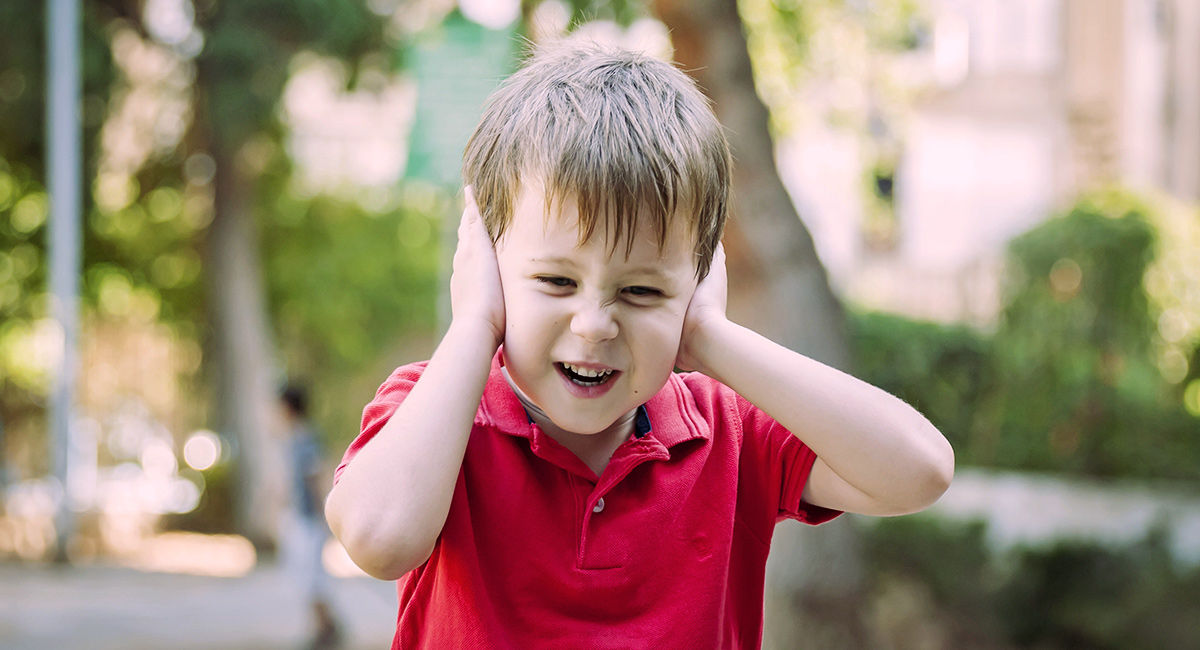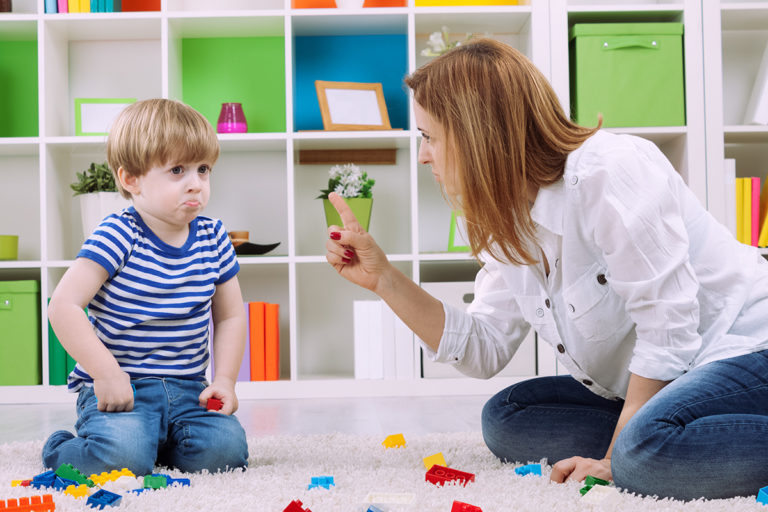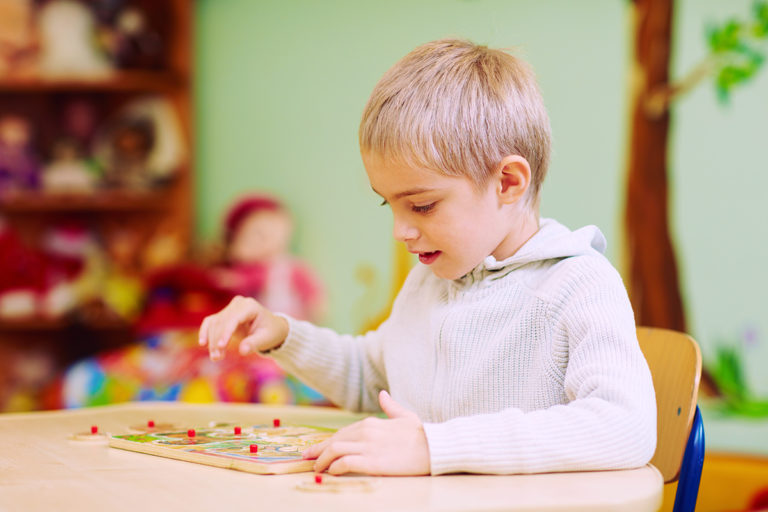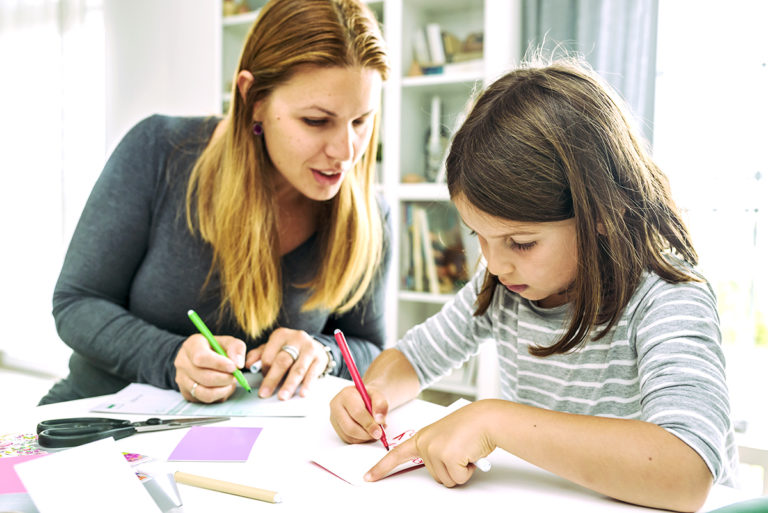The Autistic Child
by Robert J. Doman Jr.
 Children labeled as “autistic” have been enigmas since they were first identified. Fortunately, some questions surrounding these children are being answered. Many “autistic” children (children with sensory dysfunction) are now being helped, and some are achieving “normal” function. As a result of NACD’s work with “autistic” children, we have also gained a better understanding of sensory function. This understanding has had implications and applications to our work with all children.
Children labeled as “autistic” have been enigmas since they were first identified. Fortunately, some questions surrounding these children are being answered. Many “autistic” children (children with sensory dysfunction) are now being helped, and some are achieving “normal” function. As a result of NACD’s work with “autistic” children, we have also gained a better understanding of sensory function. This understanding has had implications and applications to our work with all children.
Historically, the parents of “autistic” children have suffered more (if such suffering can in fact be measured) than the parents of any other group of children. The classic “autistic” child was viewed as a child with a severe emotional problem, or as a child with childhood schizophrenia. Often, this emotional or psychiatric condition was attributed to maternal rejection. In addition to society’s punishment of the parent (particularly of the mother for supposedly rejecting her child), was the child’s behavior, which often appeared to others as rejection of people in general, and to the mother as a rejection of her in particular. Add to this the child’s often rather bizarre, and in some cases, destructive behavior, and you have a description of a very untenable situation. Such is one’s introduction to the world of the “autistic” child. Fortunately, as with many of the mystiques built up around unanswered questions, the view of the “autistic” child as an emotionally disturbed child is based upon supposition, not fact. Suppositions that we strongly question.
The Isolated “Autistic” Child
Generally, descriptions of “autistic” children are rather similar. They are essentially descriptions of symptoms, leaving the questions of cause and cure open.
When Fenichel (1960) described children with “childhood schizophrenia” he described the “autistic” child as follows: “They have little or no speech, they rarely display any effective awareness of people, and they maintain a level of activity that has the barest relation to objects or events in the real world.” Fenichel then subdivides “autistic” children into two groups: “those who have been retarded in maturation from birth, and those children with a history of regression.”
Kanner, in 1958, established criteria for infantile autism as the following: “An extreme self-isolation, or an inability to relate themselves in the ordinary way to people or situations from early in life,” and “an obsessive insistence of the maintenance of sameness.”
Children who have been diagnosed as “autistic” function within a very broad range. On the mild end of the spectrum are children who in many ways look and even act rather “normal,” but who may have some perseverative or repetitious behaviors such as rocking, humming, or repeating verbatim what is said to them (echolalia). At the other extreme are children whose behavior appears to fit many people’s perception of a severely emotionally disturbed individual. Such children are characterized by behavior that can be very hyper (active) or hypo (inactive); they can be destructive, self-destructive, and at times aggressive. All such children can generally be described as exhibiting some degree of self-isolation.
A Problem of Perception
The “autistic” child can be perceived as an emotionally disturbed child without a great deal of difficulty. They are often in their own little world, and they essentially do reject others to varying degrees. They may strike out at others, at their environment, and even at themselves as though consumed by some inner emotional force. But if we view these behaviors through other eyes, they can begin to make even greater sense.
Why do many “autistic” children have perfectly “normal” siblings? Why do many “autistic” children have warm, loving mothers? Why do some children begin life “normally” and regress into an “autistic” condition a year, or two, or three after birth? These questions cannot be easily answered with the “emotional” model; however, they can be answered with the “neurological/sensory” model.
Autism – Sensory Dysfunction
Years ago, work with brain-injured children began with the “cerebral palsied” child and the traumatically brain-injured child (mechanical injury, i.e., auto accidents, etc.), and widened with ever expanding concentric circles as implications derived from the obviously brain-injured had application to other children. Such implications expanded to include the “autistic” child.
Many obviously brain-injured children exhibit some behaviors that are often used to characterize the “autistic” child. Severely brain-injured children, as their sensory awareness develops, engage in hand waving, fascination with light, rocking, repetitious noise making, “spacing out,” self-stimulation, and in some cases, self-destructive behaviors. Are these children “a little autistic,” and as they progress and improve their sensory function and these behaviors are eliminated, do they get over being a “little autistic?”
NACD’s perception of the “autistic” child follows the neurological/sensory model. A child who has been labeled as “autistic” is viewed not as an emotionally disturbed child, or as a child with a psychiatric problem, but as a child with sensory dysfunction whose abnormal behavior is a reflection of abnormal perception.
Typically, a child given an emotional/psychiatric label is not examined or evaluated beyond the parameters of the problem as it is perceived. However, NACD has had the opportunity to examine the results of full neurological workups of “autistic” children. The results of such workups indicate that “autistic” children are brain-injured.
Examining the “autistic” child as a brain-injured child clarifies many aspects of their development and function. Referring back to Fenichel, he subdivided “autistic” children into those who were retarded in maturation from birth and those with a history of regression. When viewed as brain-injured, those children with delayed development match the expected pattern of a child with injury that affected various levels of the brain, while the child who has regressed fits the pattern of a child with an injury to only higher levels of the brain; levels that the child might not attempt to utilize until months or years following birth. This picture is not dissimilar to that of the cerebral palsied child who develops normally for the first few months before exhibiting the cerebral palsy symptoms resulting from injury to the mid brain. The rather classic picture of the “autistic” child who is attractive in appearance with only minor motor problems, or with no motor problems at all, but who is very self-stimulating, self-isolated, and who lacks speech, is a picture of a child with what generally turns out to be mild-diffuse cortical brain injury that does not seriously affect motor function, but does seriously disorganize sensory integration and the cortical function of language.
Sensory Dysfunction
NACD refers to the “autistic” child as a child with sensory dysfunction. Our work with these children begins by evaluating function in order to determine the degree and type of abnormal sensory function. That is to say, by looking at how the child reacts, it is possible to make a determination as to how the child perceives the world, which then makes it possible to assess the child’s problems in the various sensory channels. How we see the world is determined by how our brains interpret the information that comes through our five senses. How a “normal” individual perceives the world is not always as it is. For example, how loud do your children yell? If you are wide awake and relaxed, they do not yell too loudly. If you are tired and grumpy their yelling seems too loud; and if you have a migraine headache, the sound is intolerable. All the same volume but perceived differently. The way we see the world is determined by how our brains interpret it.
How does the brain of the child with sensory dysfunction perceive the world? Carl Delacato, in his book “The Ultimate Stranger,” classifies each sensory channel as being hyper, hypo, or being disrupted by “white noise” or interference within the system. Each sensory channel can be affected in a different way: For example, a child can be hypo-visual, “white noise” auditory, hypo to tastes and odors, and hyper-tactile. Each child needs to be considered on an individual basis. Evaluation of an individual is complicated by the interaction of the five sensory channels.
The Emergence of a Pattern
Through our work with children who have sensory dysfunction, a pattern has emerged into which more than half of the “autistic” children appear to fit. This pattern includes the following: hyper-auditory, hypo-central vision, hyper-peripheral vision, hyper-touch, hyper-pressure and temperature, and hypo-taste and odor. The abnormal perception produces what is termed sensory agnosia, or an inability to attach meaning to sensory impressions. Much of the input coming to these children appears to create antagonism between input, with the child’s ultimate interpretation being determined by the interplay between the various dysfunctional sensory channels. Let’s examine a typical/atypical child with severe sensory dysfunction.
Hyper-Auditory
Being hyper-auditory, sounds in the child’s environment seem much louder to him than they do to us. Because of the acuteness of his hearing and what appears to be a particular sensitivity to high sounds, the hyper-auditory child lives in a very confusing and often threatening auditory environment. He is bombarded with sound. As we attempt to talk to such a child, he is not only hearing our distorted voices, but a buzz from the fluorescent light overhead, the conversation in the next room and the traffic outside. The greater the quantity and volume of these sounds, the more difficult the interpretation. Depending upon the severity of the problem, such children will act confused, intensify their activity level and increase their degree of disorientation as the volume increases, or they may simply, turn off auditorily just to survive. As many of these children begin to improve auditorily, they understand much of what is said, but they do not hear clearly or cleanly enough to reproduce speech normally.
Hypo-Central Vision, Hyper-Peripheral Vision
The central, or macular vision of these children is hypo, or depressed, and the peripheral vision is hyper, or agitated. The result being that such children use their peripheral vision instead of their central vision to see. These children tend not to look directly at things; they do not make good eye contact, and they tend to reach for things without apparently looking at them first. These children often engage in self-stimulating visual play; they have a fascination for lights, reflections, and spinning objects; and they use, rather than play with, toys. The antagonism that exists between the agitated peripheral vision and the depressed central vision tends to perpetuate the problem until such time as direct remediative measures can be imposed.
Hyper-Touch, Hypo-Pressure and Temperature
Many things seem to create a pleasure/pain conflict with these children; their tactile systems often epitomizing this conflict. Often children with sensory dysfunction are hyper, or super-sensitive to touch. The touch receptors of the skin are so sensitive that the child may pull away from touch with fear and pain. The same child, however, if grasped firmly and deeply massaged, enjoys the sensations that this deep pressure produces. This sensitivity to touch complicates the teaching of manual skills. The self-destructiveness of some “autistic” children (biting, banging of their heads, etc.) provides them with pleasure/pain experience. Often, they appear to simply enjoy feeling.
Hypo-Taste and Odor
Many of these children are hypo-responsive to tastes and odors. They do not appear to be aware of the tastes of most foods or the odors in their environment. Being hypo-taste can produce a variety of food preferences, or lack of such. Some of the children will eat anything and everything, including harmful substances. Some will only eat foods with very strong tastes B strong enough so they can taste something. Others will find a taste they can recognize and will not eat anything unless it is this one taste.
Assessment of the Individual
Although there are some patterns being identified in “autistic” children, general assumptions should not be made about individuals. Each child must be observed as the unique individual he or she is. Knowledge of children with similar problems, however, can provide insights that can greatly assist in the diagnostic and therapeutic processes.
Treatment
Treatment of the child with a sensory dysfunction is multifaceted, including components of neurological organization, specific sensory training, design of a protected sensory environment, behavior management, as well as general medical and nutritional care. The sensory environment is of utmost importance for these children.
Coupling these problems of hyper, hypo, and agitated responses with antagonism between incoming sensory input, produces the vital need for a controlled sensory environment. Many “autistic” children, when placed in a controlled environment, respond immediately to the new non-threatening environment. For example, the hyper-auditory and hypo-central, hyper-peripheral vision children spend as much of their day as possible in an environment void of all extraneous auditory and visual input Auditory input is provided via earphones so as to avoid interference from other sounds. The physical environment is as sparse as possible so as to avoid stimulation of the overactive peripheral vision. Blacklight rooms are utilized, which eliminate the entire peripheral world (only white and fluorescent objects can be seen in blacklight). Fluorescent toys are introduced to help stimulate the central vision and teach the children how to play appropriately. Such controlled sensory environments are an integral part of the NACD Centers, and they are major factors in assisting these children in achieving their full potential.
The “Autistic” Genius
The hyper sensory function found in most “autistic” children can be changed from a negative, inhibiting function to a positive, contributing function. There is numerous documentations of “autistic” children with unusual capabilities: children who, given a date, can immediately tell you upon which day of the week it had fallen, or will fall; children with incredible memories for trivia; children who can instantly calculate complex mathematical problems. Most of these children were never taught how to do these things, and for the most part could only do one such exceptional thing. We have learned however, that many “autistic” children can be taught to do many things exceptionally well.
Learning How We Learn
Most of our children with sensory dysfunction read before they speak. Some of them read better (faster and with better comprehension) than their “normal” peers. And a few read better than anyone would have thought anyone could read. Some compute mathematics exceptionally well and some learn foreign languages virtually overnight. We have learned to use teaching as a therapeutic tool to help these children “tune in.”
Thirteen-year-old Bruce did not talk nor respond to anyone talking to him. He just floated around, and he looked no harder at people than he did at pieces of furniture. Bruce was totally in his own world. Bruce was hyper-visual and auditory and had turned the world off. To help Bruce, we started flashing word cards at him very rapidly (l/2 second intervals). These rapidly flashing cards attracted Bruce visually as rays of sunlight or steam had previously. Bruce watched the cards. As they were flashed, they were named. Bruce began to listen to the names and to associate the names with the words. Soon Bruce noticed the hands holding the cards, and the person attached to the hands B his mother. Bruce began to learn faster than we could develop materials. Bruce was able now to learn something and remember it after having seen it only once, for l/2 a second. Within two years, Bruce could read, understand, and remember everything he read, and he could read an entire page in a glance! He also remembers everything he hears; he computes mathematics instantly and understands six different languages. Bruce is very affectionate and has a good sense of humor. But Bruce is not “fixed” yet. His verbal language is still delayed, and sensitivity in his hands makes him reluctant to manipulate many things as he should. But he is well on his way!
There are others. Some who began at levels above Bruce, and others below. But many of their abilities to learn have been shocking and eye opening. Rapid, clean (free of extraneous stimuli) presentation has been the key. The same key we have discovered that turns on the “normal” preschool child; the same key that enables many other children who supposedly couldn’t learn, to learn. We have ascertained things about perception and sensory function from our “autistic” children that are helping us understand more about the entire learning process.
It is unfortunate that we live in an age of specialization, rigidity, and segregation when there is so much we can learn from each other. As our insights become clearer, hopefully more doors will open, and we can help more of these children come closer to achieving their full potentials.




